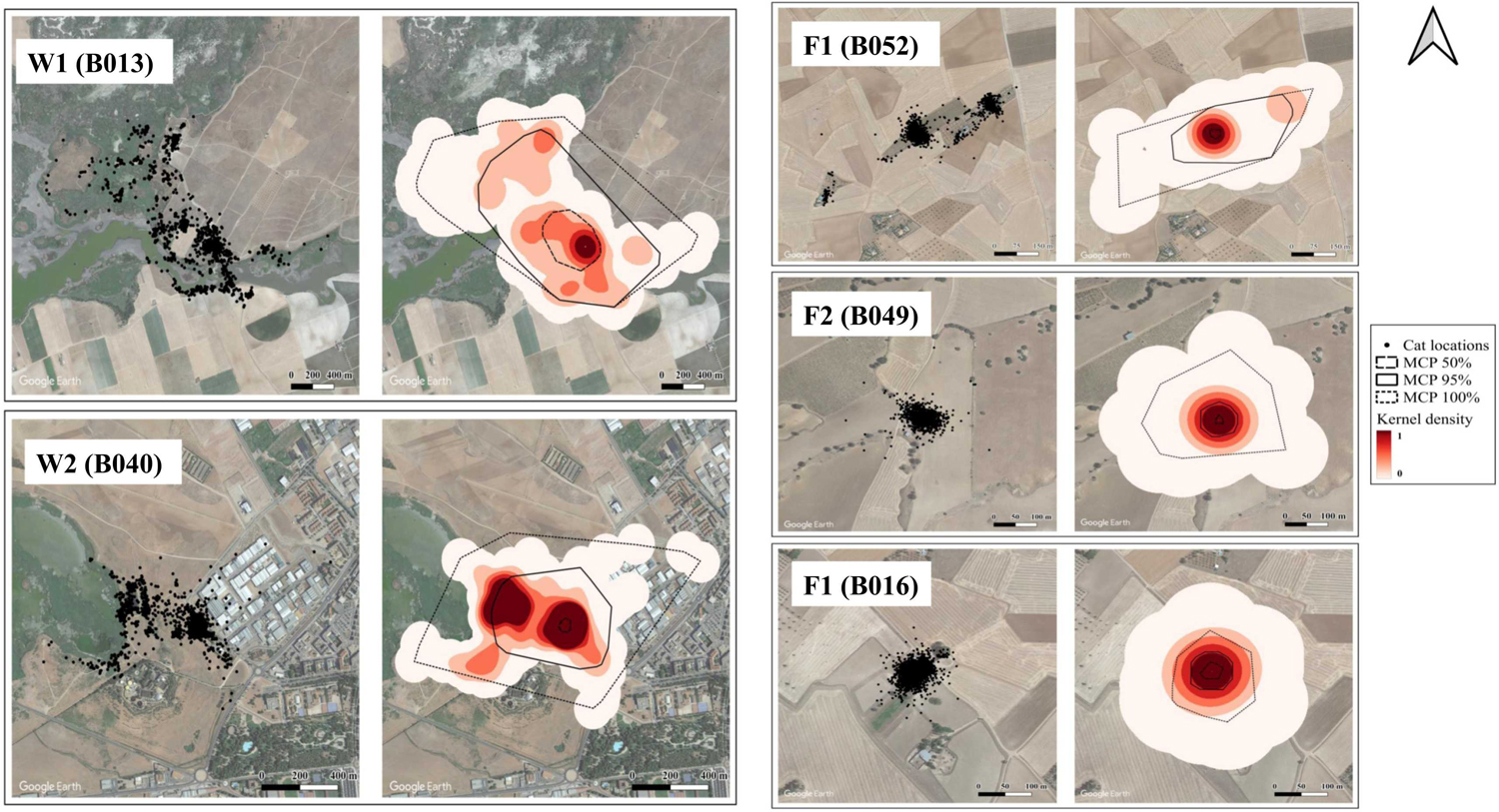While we may love how sweet and affectionate our pets cats are, the reality is that biology is still a strong influence on the instinctual behavior of domestic cats. As predators, domestics cats are highly territorial and driven to hunt, even when their dietary needs are met. While some research has shown that feeding cats a high protein diet can help to reduce their need to hunt, chasing after birds, rodents, and even insects is still an intrinsic behavior.
The debate on letting cats out
One of the ethical dilemmas cat owners face is whether to allow their cat outside or not. While cats adapted to living among humans over 10,000 years ago, it was not until the early 20th century that the concept of a cat as an indoor pet became popular. Even once cats became household pets, it continued to remain a common practice by many people of allowing their cats with unfettered access to the outdoors.
Those who continue to allow their cats to roam often cite reasons such as physical exercise, mental stimulation, and opportunities for natural behaviors like hunting. However, roaming also exposes cats to risks such as traffic accidents, fights with other cats, and the chance of getting lost.
The roaming behavior of domestic cats also has significant environmental implications, particularly in terms of wildlife predation. Cats are natural hunters, and even well-fed pets will hunt birds, small mammals, and other wildlife. This predation can have a considerable impact on local wildlife populations, especially in areas where cats are numerous. Conservationists often advocate for keeping cats indoors or supervised outdoors to protect vulnerable wildlife.
Especially in more recent years, there is a growing awareness about the downsides of allowing cats to roam freely. This has led to a subsequent drop in the percentage of pet owners who do so and an increase in alternatives like supervised outdoor time on a leash or secure outdoor enclosures.
The roaming behavior of outdoor cats
For those cats with unleashed access to the outdoors, how far do cats roam? This is a question of interest for researchers looking at the effects of free-roaming cats in natural areas, particularly areas of high conservation value.
The question of roaming behaviors by domestic cats was the subject of a recent published study by researchers from Fundación Artemisan, a Spanish wildlife conservation non-profit. The study looked at the presence and behaviour of free-roaming cats in seven sites belonging to the Natura 2000 network in central Spain, using transects, camera-trapping and telemetry.
The Natura 2000 is a network of protected areas across the European Union, established to conserve biodiversity and habitats of European importance. It encompasses a wide range of ecosystems, including forests, wetlands, and marine areas, aiming to ensure the long-term survival of species and habitats.
In Spain, 138,000 square kilometers (about 53,000 square miles) are protected as part of this network. With about six million owned cats in the country, the overlap between roaming cats and protected areas is high. Seven sites covering wetlands, farmland, and Mediterranean forest habitats were analyzed for domestic cat presence by using camera trap data over the course of a year. 52 distinctly different cats were identified by markings and cats were found to occupy all seven study states.
To study the potential interactions of free-roaming cats within these protected areas, the authors of the study trapped and tracked five adult stray cats. Each were outfitted with Chipfox GPS trackers and data on the cats’ movements was collected over a four month period.
Results of the cat roaming study
The study revealed significant variation in the home ranges and activity patterns of tracked cats. Wetland areas recorded larger home ranges and higher movement distances for cats, especially during evening hours. This suggests that habitat type influences cat behavior and their potential impact on different ecosystems.

The research found cats present in all studied sites, with their density varying across different habitats. Wetland areas recorded larger home ranges and higher movement distances for cats, especially during evening hours, compared to those in farmland areas.
Around farmland, the cats tended to stay close to buildings where they could find human-provided food, while in wetlands, they moved between human-inhabited areas and natural spaces, likely for both food and hunting. The mean daily distance (and +/- standard deviation) for the two cats roaming wetlands areas was 2.43 ± 0.84 and 2.66 ± 1.34 kilometers while the three farmland cats was 1.52 ± 0.49, 1.39 ± 0.49, and 1.30 ± 0.33.
Distance traveled during the evening increased for wetland cats while it decreased for the farmland cats. The authors hypothesized that the increased crepuscular and nocturnal activities of cats in the wetland areas might be linked to hunting behavior. Cats in the farmland areas did not have the same behavior, likely due to being more dependent upon anthropogenic food sources.
The author felt that the results of this small study can help inform better domestic cat management strategies where their presence overlapped with sensitive ecological areas. To mitigate the impact of free-roaming cats, monitoring during the evening and night is crucial, along with selective trapping targeting areas with human-provided food sources. Campaigns promoting responsible pet ownership and adoption could also help.
The study
Lázaro, C., Castillo-Contreras, R., & Sánchez-García, C. (2024). Free-roaming domestic cats in Natura 2000 sites of central Spain: Home range, distance travelled and management implications. Applied Animal Behaviour Science, 270, 106136. doi: 10.1016/j.applanim.2023.106136
References
Foreman-Worsley, R., Finka, L. R., Ward, S. J., & Farnworth, M. J. (2021). Indoors or outdoors? An international exploration of owner demographics and decision making associated with lifestyle of pet cats. Animals, 11(2), 253. doi: 10.3390/ani11020253







